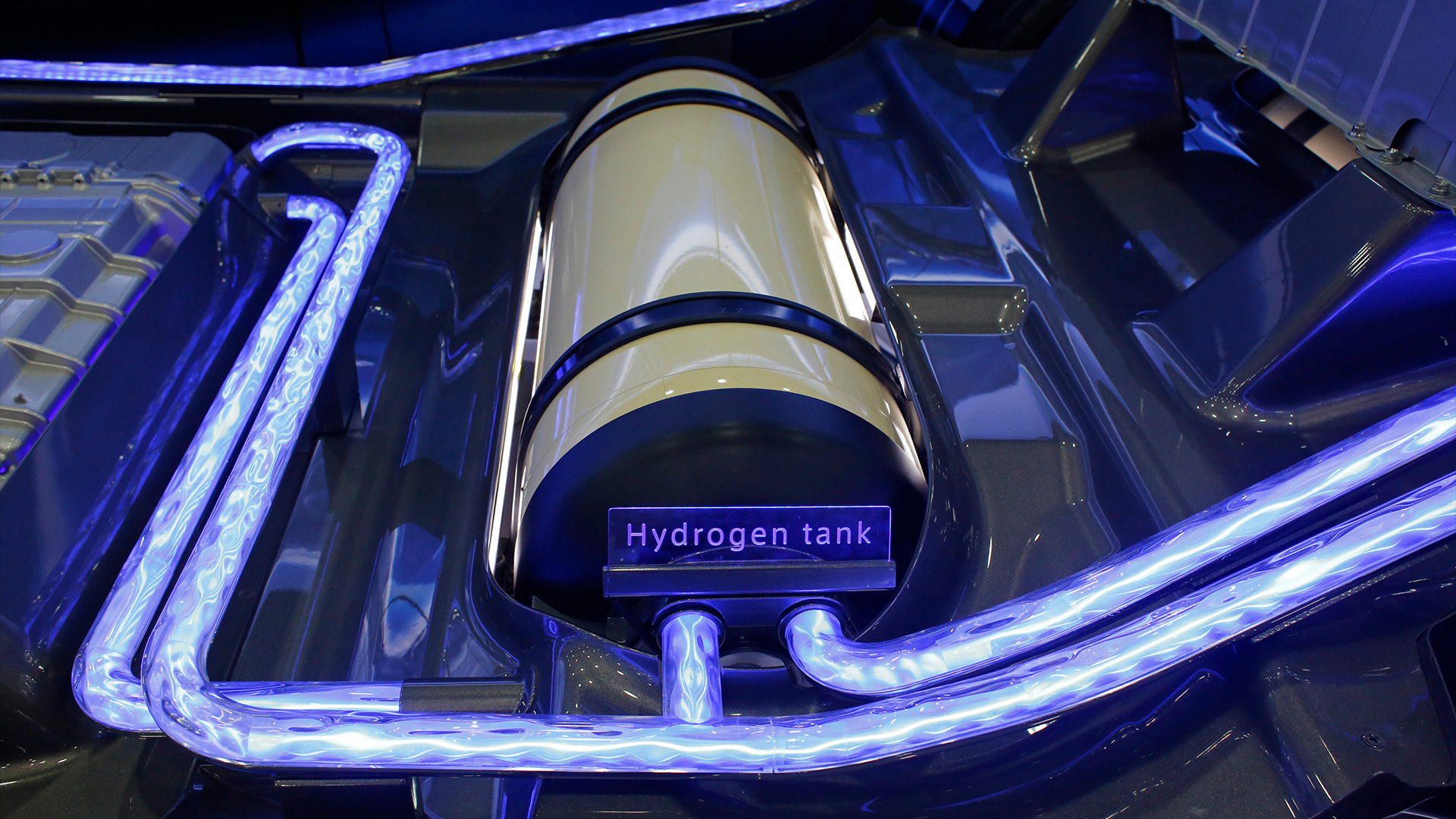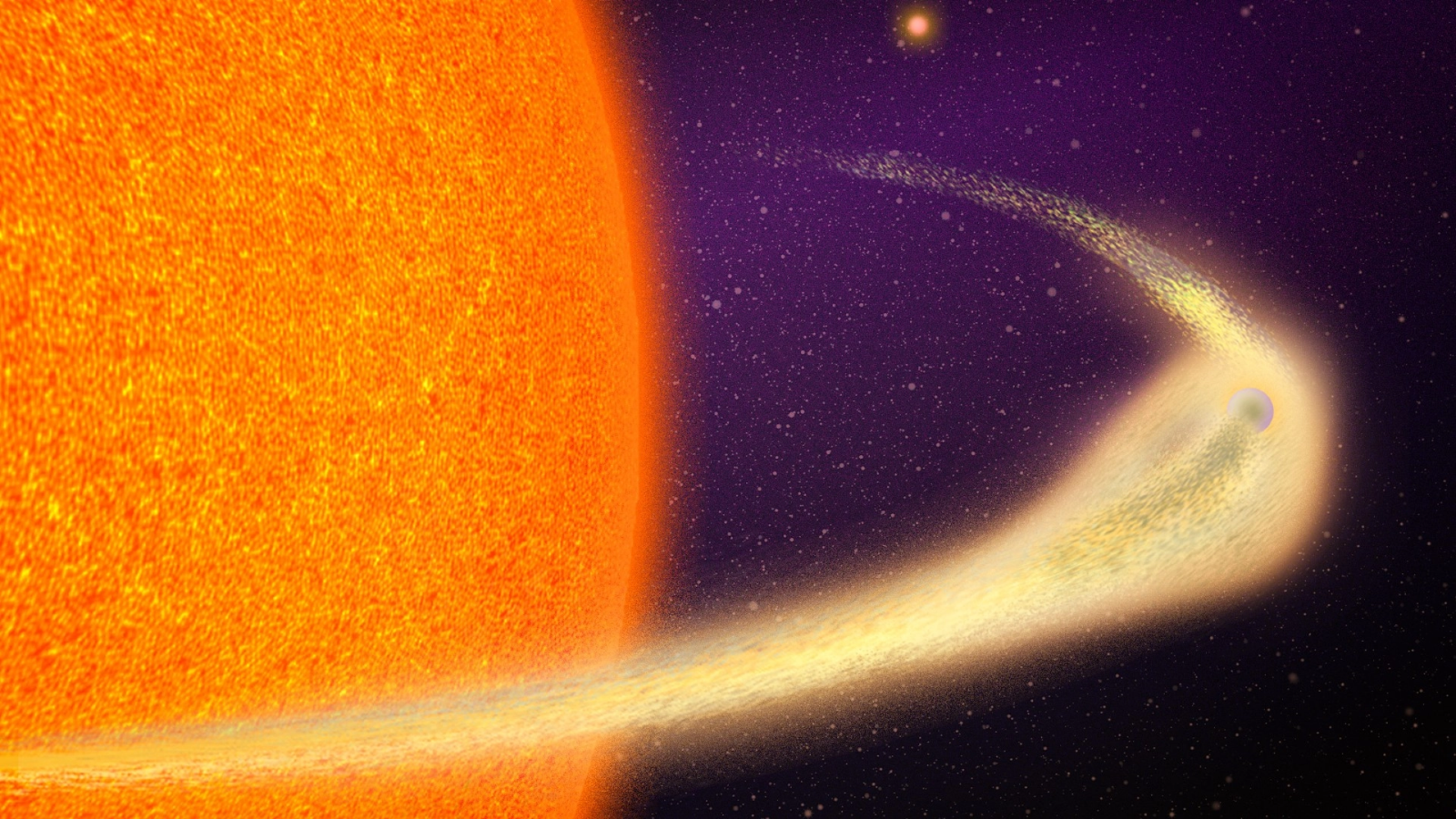Scientists discover revolutionary method that makes fuel from water and sunlight — but it's not finished yet
Scientists in Japan have demonstrated a new method to create hydrogen fuel without emitting greenhouse gases. But key steps to improve its efficiency remain for it to be commercially viable.

Scientists in Japan have demonstrated a new proof-of-concept reactor that can harvest renewable hydrogen fuel from sunlight and water.
The new 1,076-square-foot (100 square meters) reactor uses photocatalytic sheets to split apart the oxygen and hydrogen atoms found in water molecules, thus siphoning the hydrogen away to be used as fuel.
While the technology remains in its infancy, the scientists behind the research say that, if more efficient photocatalysts can be developed, their breakthrough could enable the production of cheap, sustainable hydrogen fuel to meet various energy needs. They published their findings Dec. 2 in the journal Frontiers in Science.
"Sunlight-driven water splitting using photocatalysts is an ideal technology for solar-to-chemical energy conversion and storage, and recent developments in photocatalytic materials and systems raise hopes for its realization," senior author Kazunari Domen, a chemistry professor at Shinshu University in Japan, said in a statement. "However, many challenges remain."
Upon being exposed to light, photocatalysts boost chemical reactions that break water molecules down into their constituent parts. However, most existing "one-step" catalysts — which decompose water into hydrogen and oxygen in one go — are extremely inefficient, leaving most of the hydrogen fuel to be refined using natural gas, a fossil fuel.
Related: 'Holy grail' of solar technology set to consign 'unsustainable silicon' to history
To look for a way past this deadlock, the researchers behind the new study investigated a photocatalyst that uses a more sophisticated two-step process, with one step separating out the oxygen and the next step removing the hydrogen.
Sign up for the Live Science daily newsletter now
Get the world’s most fascinating discoveries delivered straight to your inbox.
Creating a photocatalyst for this process enabled the scientists to build their prototype reactor, which ran for three years and worked even better using real sunlight than the ultraviolet light used in the lab.
"In our system, using an ultraviolet-responsive photocatalyst, the solar energy conversion efficiency was about one and a half times higher under natural sunlight," first author Takashi Hisatomi, a researcher at Shinshu University, said in the statement. "Simulated standard sunlight uses a spectrum from a slightly high latitude region. In an area where natural sunlight has more short-wavelength components than simulated reference sunlight, the solar energy conversion efficiency could be higher."
Despite these promising gains, the efficiency of the reaction is still too low for commercial use.
"Currently, the efficiency under simulated standard sunlight is 1% at best, and it will not reach 5% efficiency under natural sunlight," Hisatomi said.
To make the important strides to increase efficiency, the scientists have called on others to create better photocatalysts and larger reactors. Work on safety will also be vital: Hydrogen fuel refining also produces the explosive byproduct oxyhydrogen, which can be safely disposed of in the two-step process.
"The most important aspect to develop is the efficiency of solar-to-chemical energy conversion by photocatalysts," Domen said. "If it is improved to a practical level, many researchers will work seriously on the development of mass production technology and gas separation processes, as well as large-scale plant construction. This will also change the way many people, including policymakers, think about solar energy conversion, and accelerate the development of infrastructure, laws, and regulations related to solar fuels."

Ben Turner is a U.K. based staff writer at Live Science. He covers physics and astronomy, among other topics like tech and climate change. He graduated from University College London with a degree in particle physics before training as a journalist. When he's not writing, Ben enjoys reading literature, playing the guitar and embarrassing himself with chess.









